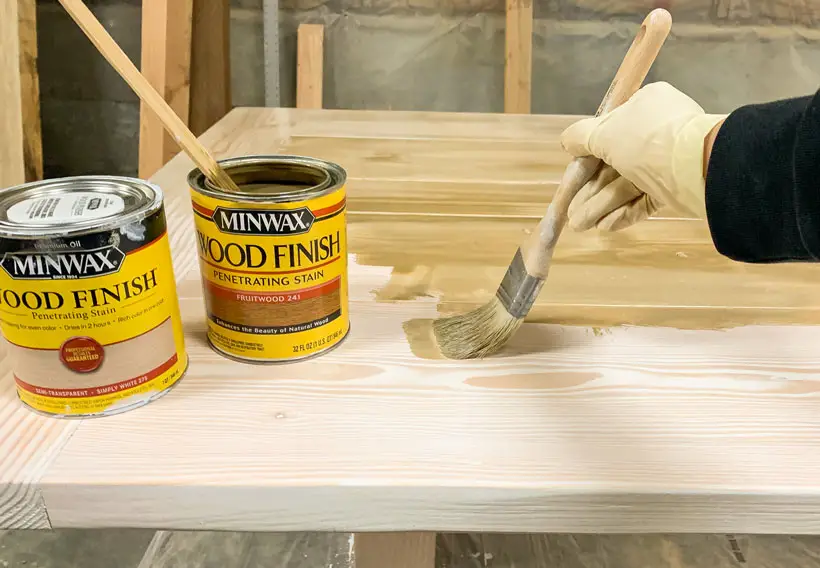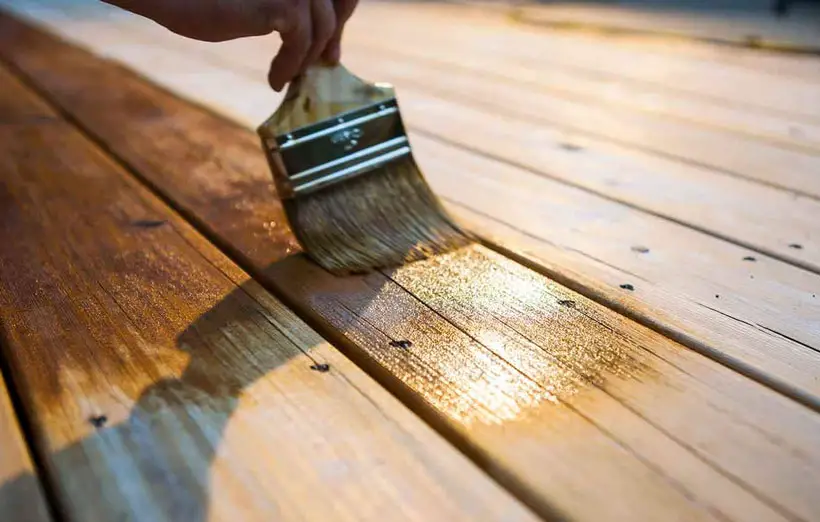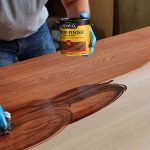Wood Stain Sticky After Drying: How To Fix?
The last thing you want after staining wood is a sticky stain, even after drying. At this point, you may feel frustrated since drying is always supposed to work for sticky wood stains. Well, drying isn’t the case every time as other factors might be involved.
So, wood stain sticky after drying: how to fix? Ensure that you have given enough time for it to dry which is generally 24-48 hours. Also, confirm the area is ventilated. The last resort is to re-stain the wood by removing the stain first using a detergent solution, Isopropyl alcohol, and sandpaper.
Nevertheless, knowing the solution, in brief, is never enough to solve the issue. You need to know about them in depth to be able to fix them easily. Well, that’s what we are going to do today. Let’s get started.
Wood Stain Sticky After Drying: How To Fix?
Always ask yourself whether you have given plenty of time or not. Inadequate drying time is one of the most common reasons behind a sticky wood stain.
The rule of thumb here is to wait at least 24 hours to 48 hours for the stain to dry. However, some require more and others require less. If it’s an oil-based stain, you can expect more time to dry off. In contrast, water-based stains would take less time.

You should read the manufacturer’s recommendation to figure out the drying time as they vary highly between products. Nevertheless, here are some things you can do to speed up the process:
Ventilation
Proper ventilation is required for the wood stain to dry off. You can’t leave it in a closed room and expect it to dry off quickly.
Sand Papers
Utilize this method only when there are extra layers of coating on particular spots that aren’t drying off. Use sandpaper of 120 grit to lightly sand the region where the excess stain is present.
Re-staining
If all of the processes mentioned above don’t work for you, you need to take off the stains where there is an excess of them. Later on, recoat it properly. Let’s see how you can do that.
Step-By-Step Guide on Getting Rid of Sticky Wood Stain

Here are all the necessary steps you will be required to get rid of sticky wood stain:
Step 1: Figure the sticky spots.
Step 2: Mix water and mild detergent in a small bucket and get hold of a sponge.
Step 3: The wood may be contaminated and mess with the drying process. That’s why you need to scrub the sticky spots with the detergent solution.
Step 4: Take a few tissue papers and wipe the scrubbed spots to dry them off.
Step 5: Take some isopropyl alcohol on a dry cloth and rub it on the sticky spots. Isopropyl alcohol is a versatile solvent that is commonly used for cleaning and disinfecting purposes. You may find it in pharmacies and supershops.
Step 6: Get hold of more tissue paper and moisten it with water to rub away any alcohol sticking to the spots.
Step 7: Wait for it to dry.
Step 8: Re-apply the stain in those spots with proper precautions and by following the manufacturer’s recommendation.
Reasons Behind A Sticky Wood Stain
Here, we will talk about the problems that might have caused a sticky wood stain in the first place. Let’s check them out.

Improper Utilization of Stain
There might be a chance that you might have used the stain in the wrong way. Now, there could be multiple reasons for your wrongdoings. Maybe it’s the way you stained that isn’t effective for drying, or the previous finish present isn’t compatible with the new stain.
For example, if you have applied wood stain more than you want or thick coats of wood stain have high moisture content.
However, the only way to properly utilize the stain is by following the manufacturer’s manual.
Here is a video that will help you stain wood properly, along with some tips and tricks.
Inadequate Drying Time
As already mentioned in the last section, some stains require more drying time than others. Thus, if it’s just 10 hours after the staining and you are worried about it not drying off, calm down. It might require more time to dry it off, especially if it’s oil-based.
Overall, have patience and look out for the manufacturer’s manual to find out the average drying time.
Environmental Factors
Humidity and temperature both play a role in drying out your wood from stains. The things you don’t want are high humidity and low temperature.
For high humidity, as the air is already saturated with moisture, it becomes more difficult for water to evaporate from wet surfaces. As a result, a slower drying time is observed.
On the other hand, lower temperature means lower vapor pressure. Thus, the molecules in the stain vibrate less, resulting in higher drying time.
Poor Quality Stain
The quality of the stain matters a lot in this case. Using a high-quality stain leads to a proper mix between wood and the stain. Whereas low-quality stains aren’t capable of mixing with the wood properly.

Therefore, it’s best to verify the stain’s quality, expiration date, etc. Look out for reviews and always go with trusted brands.
Incompatible with the wood or surface
No stain is compatible with every surface. You must check what surfaces the stain is compatible with. It may be a coating already present or the wood that the stain you used isn’t compatible with, such as some exotic woods, like Steak and Rosewood.
Thus, always check the compatibility in the manufacturer’s manual to ensure you are using the right surface.
If you’re experiencing the issue of wood stain remaining sticky after drying and need solutions, our guide on how to clean wood before staining might offer insights into preparing your wood properly before applying stain. Additionally, if you’re wondering about the importance of sanding after staining, our article on should you sand after staining considerations is here to offer insights. We understand the importance of achieving the best finishes and addressing specific application techniques, and our comprehensive resources are designed to help you navigate and make informed choices for your woodworking projects.FAQs
Let’s check out some commonly asked questions regarding this topic.
Q: Can I apply a second coat of stain if the first coat is sticky?
No, you shouldn’t use a second coat of stain if the first coat is already sticky. If a stain is applied on top of a wet or sticky surface, the finish may be uneven, and the stain may not adhere properly.
Q: Can I use a fan or heater to speed up wood stain drying?
Yes, you can use fat or a heater to speed up the drying process. Nevertheless, the downside is that it may lead to uneven color or cracking if a high-speed fan or heater is used.
Q: Can I mix different brands of wood stains?
In general, combining multiple wood stain brands is not advised unless specifically stated by the producers. The formulas, drying durations, and compatibility with other products of various brands may differ.
Conclusion
To conclude, that was all you needed to know about wood stain sticky after drying: how to fix them. Just make sure you have given it plenty of time to dry off, as the time varies significantly.
Nevertheless, if you have given it enough time and ventilation, you need to go with the re-staining process. Here, you must clean and scrape with a detergent solution, Isopropyl alcohol, and sandpaper to remove the sticky areas. Later on, recoat them with stain properly.




